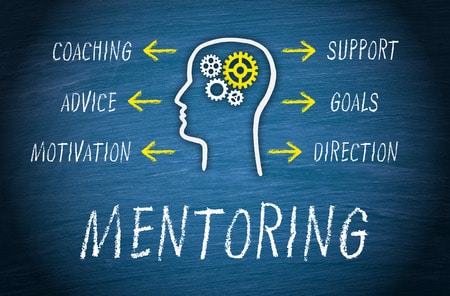
6 Tips for Establishing a Supply Chain Mentorship Program
Establishing a supply chain mentorship program is a proven way to attract, develop and retain talent. There are many benefits that are gained for both the mentor and mentee, and just as many benefits that can be gained for supply chain organizations as well, such as:
- Maintain High Level of Employee Engagement
- Improve Employee Retention Rate
- Transfer Supply Chain Knowledge and Skills
- Improve Succession Planning throughout the Supply Chain Organization
- Develop a Learning Culture that Promotes Professional Growth
- Transform Culture to a Desired State
- Develop and Enhance Leadership and Coaching Skills in Managers
- Improve Motivation, Morale, and Overall Performance
- Develop, Advance, and Retain High Potential Employees
- Promote Collaboration throughout the Workforce
- Improve Diversity in the Workforce
- Accelerate Innovation throughout the Enterprise
- Teach Tenured Employees New Skills (Reverse Mentoring)
While setting up a supply chain mentorship program is simple and cost-effective, there is no such thing as a “one size fits all” model. We’ve compiled a simple step-by-step outline below that will help you with developing and implementing a mentorship program for your supply chain organization.
Establish Supply Chain Mentorship Program Objectives and Guidelines
It’s important to establish the main goals of your mentorship program so you can structure the program around the organization’s most important objectives. For example, a program focused on employee retention will look different that one centered around leadership training. Ask yourself the following questions: What are our most significant challenges from a talent perspective? What is the desired outcome? Who will participate? How long should the mentorships last?
Designate a Supply Chain Mentorship Program Coordinator & Steering Committee
An effective mentorship program has one dedicated individual who will oversee the implementation and management of the program. You should consider creating a cross-functional steering committee as well to assist this individual with the program. The steering members should consist of members from your supply chain leadership team, Human Resources and leaders from your operations e.g. manufacturing plants or distribution centers. This structure is conducive for cross-training your workforce and improving collaboration between corporate supply chain employees and operations/field staff.
In addition, involvement from the top down can help ensure the success of the mentorship program so it’s recommended that the senior-most leader e.g. Chief Supply Chain Officer serve as the program sponsor. This helps to emphasize the importance of mentorship to the supply chain organization and can help drive participation throughout the workforce, from corporate to each manufacturing or distribution facility across your supply chain footprint.
Pair Mentor/ Mentee
Mentoring can exist in a group setting, but the most common model is one-to-one. There are many software systems you can evaluate that use algorithms to help pair mentors and mentees, track meetings, establish goals, measure results, and much more. If you’re a smaller organization, you can get by with a manual process using Microsoft Office applications to create basic forms that collect pertinent information for the mentor and mentee to aid with mentorship pairing.
Be sure to do conduct research to determine the best model for your organization and consider running a few mentorship pilots before expanding the program across the workforce.
Manage Expectations
It’s important to communicate what the mentee and mentor should expect from the program as well as what not to expect, such as special treatment for promotions, for example. Both should have a clear understanding of the time commitment and program guidelines as well.
A strong mentor-mentee relationship can help new employees learn the ropes from a veteran employee and find a source for supply chain management career advice, while also helping the more seasoned worker see solutions and approaches to company initiatives or challenges from a fresh perspective.
Develop the Framework
Mentor pairs may structure their time and meeting agendas differently depending on the goals and objectives of each mentorship. However, it’s very important to put a solid framework in place that enables success throughout the lifespan of the mentorship.
The framework should include basic communication templates, meeting agendas, action plans, and progress reports. You’ll also want to establish an exit plan that successfully ends the mentorship and collects feedback on what went well, what didn’t go so well, etc. This is valuable information that can be used for coaching and developing both mentors and mentees so they can make improvements for the next mentorship that they enter into.
Measure Results
While it’s critical to ensure that your supply chain mentorship program is helping both the mentors and mentees reach their goals, it’s equally important to measure the overall success of the program to ensure it’s driving the right results based on the program’s goals and objectives.
If your main goal is to improve retention, track your attrition rate to ensure you’re seeing steady improvements. If your goal is to improve employee engagement, you should be conducting pulse surveys, one-on-ones and exit interviews to ensure that employee engagement is improving throughout your supply chain organization.
Through supply chain mentorship programs, your employees can become more engaged, empowered, and productive.